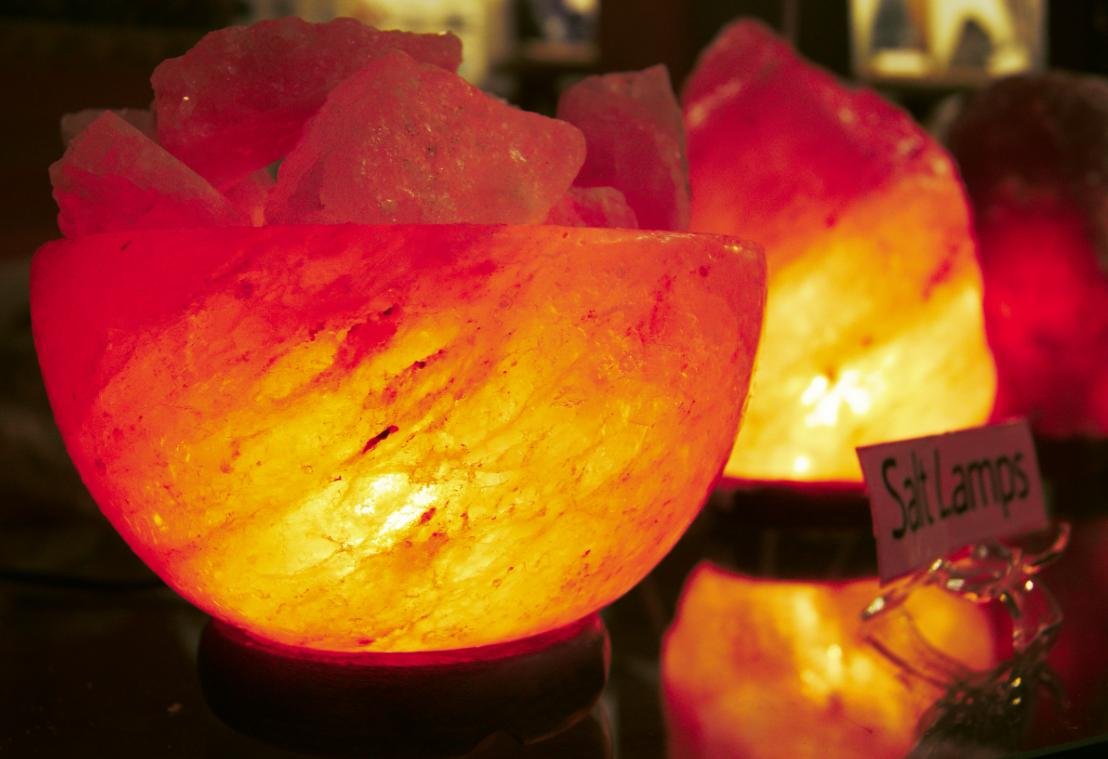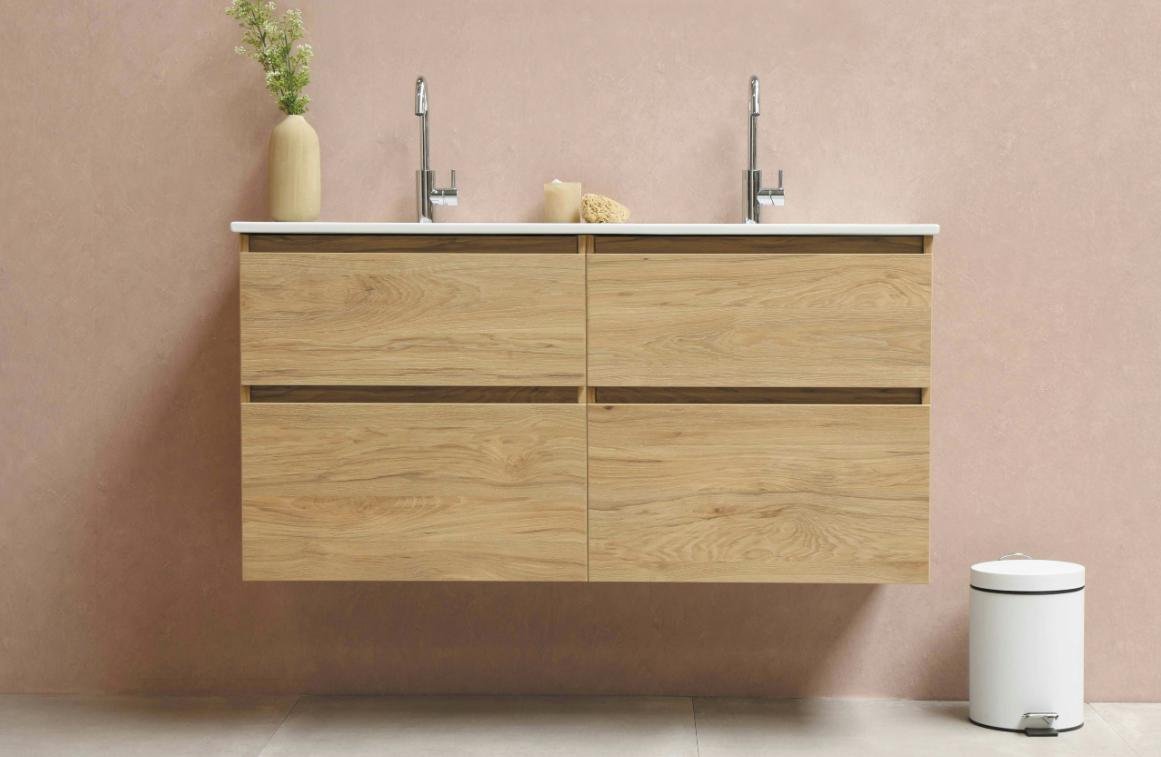Introduction to Salt Lamps
Salt lamps, often revered for their unique aesthetic appeal, are decorative light sources made from Himalayan pink salt blocks. These natural formations originate from ancient sea beds, which have undergone geological processes over millions of years. As a result, the salt used in these lamps is not only visually striking but also carries a rich history, making each piece unique. Typically, a light bulb is placed inside the hollowed-out salt rock, illuminating the lamp and emitting a warm, inviting glow.
The increasing popularity of salt lamps can be attributed to both their artistic charm and the growing trends in wellness and holistic health. Many individuals are drawn to the soft ambiance that these lamps create, adding a serene touch to homes and offices. This gentle illumination is often complemented by claims surrounding the health benefits of salt lamps. Proponents suggest that they can help purify the air by releasing negative ions, thereby reducing allergens and promoting an overall sense of relaxation. While scientific evidence in support of these claims may be limited, the perceived benefits have certainly contributed to their prevalence in modern interiors.
Moreover, salt lamps serve as symbols of mindfulness and balance, aligning with the increasing focus on wellness in contemporary lifestyles. Home décor enthusiasts appreciate these lamps not only for their functionality but also as a means of enhancing their living spaces with a natural touch. Their versatility allows them to fit seamlessly into various interior designs, making them a favored choice amongst homeowners and retailers alike. As more people become aware of the potential benefits and aesthetic qualities of salt lamps, their presence continues to grow in households around the globe, underpinning a notable trend in wellness-oriented home décor.
Importance of the Right Bulb Size
Selecting the appropriate bulb size for your salt lamp is crucial for ensuring its optimal performance. The right size directly affects the lamp’s brightness, heat generation, and effectiveness in promoting moisture evaporation. Typically, salt lamps operate using incandescent or LED bulbs, with wattage and size playing vital roles in their functionality.
The brightness of a salt lamp is largely determined by the bulb wattage. A higher wattage bulb will emit more light, creating a brighter glow, while a lower wattage bulb might provide a dimmer illumination. This variation in brightness can significantly influence the ambiance of a room. For individuals seeking softer lighting for relaxation or meditation, a lower wattage might be preferable. Conversely, if the intent is to brighten a space, opting for a higher wattage could be beneficial, as long as it aligns with the lamp’s design specifications.
Heat generation is another important factor linked to the bulb size. The proper amount of heat produced is essential for the functioning of the salt lamp, as it aids in the evaporation of moisture absorbed by the salt crystals. Insufficient heat can lead to reduced effectiveness in improving air quality, negating the salt lamp’s intended health benefits. Therefore, ensuring that the bulb size corresponds to the salt lamp’s dimensions will help maintain appropriate heat levels, thus optimizing moisture evaporation and enhancing indoor air quality.
Overall, careful consideration of the bulb size enhances the functionality and appearance of salt lamps, ensuring they serve their purpose effectively. By selecting the correct bulb, users not only enjoy a visually appealing lighting solution but also harness the health benefits associated with air purification. Ultimately, the right bulb choice encourages a balanced environment conducive to well-being.
Standard Bulb Sizes for Salt Lamps
When selecting a bulb for your salt lamp, it is essential to consider standard sizes and wattage options that enhance both functionality and aesthetic appeal. Salt lamps typically require bulbs that are compatible with their size and design. The most common bulb sizes for salt lamps are 15-watt and 25-watt incandescent bulbs, though some larger models may accommodate up to 40-watt bulbs. Incandescent bulbs are favored for their warmth and soft glow, creating an inviting atmosphere that complements the natural properties of the salt lamp.
LED bulbs have gained popularity for their energy efficiency and longevity. When using LED options, it is generally recommended to choose bulbs rated between 5 and 15 watts to ensure they do not overheat the salt lamp, which could lead to damage over time. Additionally, LED bulbs produce less heat compared to incandescent bulbs, making them a safer choice for prolonged usage. These bulbs are available in different color temperatures, allowing users to select a warm or cool light based on their preference.
When selecting the type of bulb, consider the lamp’s size and the desired brightness. While smaller salt lamps may only require lower wattage bulbs, larger lamps can benefit from higher wattage options to provide an adequate light output. It is crucial to check the manufacturer’s recommendations to avoid overheating. Proper bulb selection not only enhances the lamp’s aesthetic qualities but also ensures its optimal performance. Thus, understanding these standard bulb sizes and types will enable you to make an informed choice that best suits your salt lamp’s unique needs.
How to Determine the Right Bulb Size for Your Salt Lamp
Choosing the appropriate bulb size for your salt lamp is crucial for both functionality and aesthetic appeal. The first step in this process is to measure the dimensions of your lamp. Use a standard measuring tape to determine the height and width of the lamp base, as well as the total height including any decorative elements. Additionally, weigh your salt lamp; this can influence the type of bulb you select.
Once you have these measurements, it’s essential to consider the wattage of the light bulb. A larger, heavier lamp typically requires a higher wattage bulb to ensure adequate brightness and heat production. Generally, for lamps weighing over 8 pounds, a bulb ranging from 15 to 25 watts is advisable. Conversely, smaller lamps can function well with lower wattage options, that still provide a soft glow without overwhelming the space. Always refer to the manufacturer’s recommendations when available.
Next, consider the lamp’s placement within your space. If positioned in a larger room, you may want a brighter bulb to effectively illuminate the area. Alternatively, for smaller, intimate settings, a dimmer bulb can create a warm ambiance. Each room may require a different approach to achieve the desired lighting effect.
Lastly, consider the type of bulb—incandescent or LED. Incandescent bulbs are traditionally used for salt lamps and offer a warm light, while LEDs have a longer lifespan and are more energy-efficient. However, it is important to ensure that LED bulbs produce sufficient heat as salt lamps can only effectively absorb moisture and cleanse the air when the bulb generates warmth.
By closely following these guidelines, you can select the right bulb size that enhances the beauty and functionality of your salt lamp, contributing to a soothing atmosphere in your home.
Benefits of Using the Appropriate Bulb Size
Using the correct bulb size in your salt lamp offers a multitude of advantages, significantly impacting not only the performance of the lamp but also the ambiance of your living space. One of the primary benefits is the improvement in light quality. A bulb that is too small will not emit enough light, leading to a dim and uninviting environment. Conversely, a bulb that is too large can produce harsh lighting, detracting from the soothing qualities associated with salt lamps. Selecting the appropriate wattage ensures that the lamp radiates a warm, inviting glow that enhances relaxation and mood.
Moreover, the longevity of both the bulb and the salt lamp itself is greatly influenced by choosing the right size. An appropriately sized bulb operates efficiently within the lamp’s design parameters, preventing overheating and potential damage to the salt material. This can extend the lifespan of the bulb, minimizing the frequency of replacements and providing a more economical lighting option in the long run. Bulbs that are too powerful can lead to faster burnout, thereby increasing overall maintenance costs.
The aesthetic value of your salt lamp is also enhanced by selecting the right bulb size. A properly fitted bulb illuminates the salt crystals beautifully, allowing for the unique hues and textures to shine through, which enriches the decorative appeal of the lamp. This aesthetic enhancement not only contributes to the ambiance of a room but also emphasizes the natural properties of the salt itself.
Another factor to consider is energy efficiency. Using the right-sized bulb can lead to considerable energy savings, as it reduces unnecessary energy consumption. This contributes to a more sustainable lifestyle, allowing users to enjoy the benefits of their salt lamp without excessive energy expenditure.
Common Mistakes to Avoid when Choosing a Bulb
When selecting a bulb for your salt lamp, it is imperative to avoid certain common mistakes that can impact both the performance of the lamp and its longevity. One frequent error is choosing a bulb with a wattage that exceeds the recommended specifications for the lamp. High wattage bulbs can generate excessive heat, which may not only shorten the life of the bulb but also risk damaging the lamp itself. Salt lamps are made of natural materials that can be sensitive to high temperatures. Ensuring that the bulb’s wattage aligns with the manufacturer’s recommendations is crucial for maintaining the integrity of the lamp.
Another mistake often observed is the choice of bulbs that are too small in size. A bulb that does not provide adequate light may result in an underwhelming glow, negating one of the primary benefits of using a salt lamp. These lamps rely on the warmth emitted by the bulb to enhance their natural glow, contributing to a calming ambiance. Selecting a bulb that is too dim can diminish the aesthetic appeal and functionality of the lamp, making it less effective than intended.
Additionally, some individuals may overlook the importance of bulb type. Different bulb types can produce varying light qualities; for instance, incandescent bulbs typically create a warm, inviting glow that is ideal for salt lamps. Conversely, LED bulbs, while energy-efficient, can emit a cooler light which may not provide the same comforting ambiance. It is vital to consider both the lumens produced and the color temperature of the bulb. By avoiding these common pitfalls, you can ensure that your salt lamp performs optimally while contributing positively to your living space.
User Recommendations and Experiences
Users of salt lamps often share valuable insights based on their experiences with choosing the appropriate bulb size. Many individuals emphasize the importance of selecting bulbs that complement the specific dimensions and weight of their lamps. A common recommendation is to start with the wattage that the manufacturer suggests, which typically ranges between 15 to 25 watts for smaller lamps and up to 100 watts for larger ones.
One user, Laura, mentioned, “I found that using a 15-watt bulb in my medium-sized lamp provided the perfect glow. It was bright enough to illuminate the room without feeling harsh.” Her experience highlights how brightness can vary significantly based on bulb size, making it essential to consider personal preferences when selecting a replacement bulb.
Another user, Michael, recommended experimenting with different bulb sizes: “Initially, I used a 25-watt bulb for my large salt lamp, but switched to a 40-watt bulb for a cozier ambiance. It really made a difference in the overall warmth and atmosphere of my living space.” This insight reinforces the idea that trial and error play a crucial role in finding the right fit, as individual tastes and room dimensions can impact the effectiveness of the salt lamp.
Reviews on various online platforms often suggest users prefer LED bulbs due to their energy efficiency and longevity compared to traditional incandescent options. “I replaced my old watt bulbs with 5-watt LED versions and noticed they not only last longer but also produce a soft, relaxing glow,” shared Rebecca, illustrating the potential advantages of modern bulb technology.
Overall, anecdotal evidence and user experiences highlight that choosing the right bulb size for a salt lamp involves personal experimentation and consideration of the desired ambiance. Listening to the feedback of those who regularly use salt lamps can greatly aid in making an informed decision regarding bulb selection.
Maintaining Your Salt Lamp for Optimal Performance
Proper care and maintenance of your salt lamp are essential to ensure longevity and optimal performance. One of the key factors to consider is the cleaning process. Salt lamps can attract dust and debris over time, diminishing their aesthetic appeal and effectiveness. To clean your lamp, use a slightly damp cloth to gently wipe the surface. It is vital to avoid using harsh chemicals, as these can corrode the salt and affect its performance. If necessary, you can occasionally use a mixture of water and vinegar, but ensure that the lamp is unplugged and dry thoroughly afterward.
The bulb inside your salt lamp also requires attention. It is advisable to check the bulb regularly for signs of wear or damage, and it should be replaced when it no longer emits sufficient light. Generally, it is recommended to change the bulb every 6 to 12 months, depending on usage. A brighter bulb can enhance the lamp’s ability to release negative ions, improving air quality in your environment. Selecting the right wattage is crucial; typically, a 15-watt bulb is ideal for small lamps, whereas larger ones may need up to 25-watt bulbs for sufficient illumination.
Another aspect of maintaining your salt lamp is managing moisture build-up, which can often be a concern due to the hygroscopic nature of salt. When the lamp is heated, it releases absorbed moisture; however, if it remains turned off for an extended period, moisture can accumulate and lead to potential issues. To combat this, it is advisable to keep your lamp on for several hours each day. If you notice excessive moisture, you can increase the heating from the bulb or if necessary, dry the lamp using a soft cloth. Adhering to these care practices will not only enhance your salt lamp’s functionality but also extend its lifespan.
Conclusion and Final Thoughts
In our exploration of selecting the appropriate bulb size for salt lamps, we have highlighted several crucial factors that contribute to the optimal functioning and aesthetic appeal of these unique lamps. The importance of choosing the right bulb size cannot be overstated, as it directly influences not only the illumination of the salt lamp but also its therapeutic benefits and overall life span. Proper lighting ensures that the lamp can effectively release negative ions into the air, promoting better air quality and creating a calming environment.
When selecting a bulb, it is essential to consider the wattage and size specifications suitable for the specific salt lamp you own. A bulb that is too powerful may lead to overheating, potentially damaging the salt material over time. Conversely, a bulb with insufficient wattage may not provide adequate illumination, undermining the lamp’s aesthetic qualities and therapeutic purposes. Therefore, it is advisable to consult the manufacturer’s guidelines to determine the correct bulb size and type, ensuring compatibility with your lamp’s design.
Furthermore, individual preferences play a significant role in this decision-making process. Some users may prefer softer, dimmer lighting for relaxation, while others might opt for brighter illumination for functional purposes, such as reading or working. Additionally, experimenting with different bulb types, such as LED or incandescent, can yield varying results in terms of light quality and energy efficiency. Ultimately, the choice of bulb size should align with your personal needs and the intended ambiance of the space where the lamp will be used.
By taking the time to evaluate your specific requirements and following the appropriate guidelines, you can enhance your salt lamp experience, making it a delightful addition to your home or workspace.







